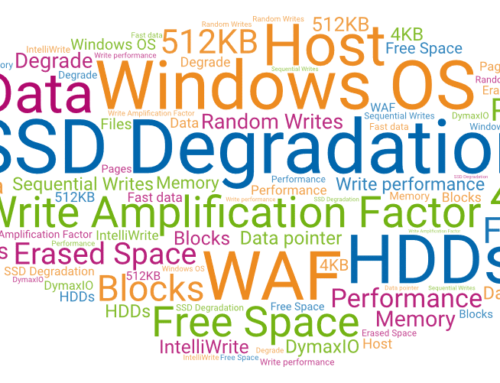“DO NOT DEFRAG DATABASES!” is one of the more popular myths/misconceptions we encounter in promoting and selling Diskeeper. BTW; when I define database (DB) servers, I also include purposed servers such as email, Domain Controller, DNS, etc. And of course MS SQL, Oracle, Sybase, and others (where the DB back-ends an app – e.g. a Customer Relationship Management program). I’ve seen technically comprehensive studies measuring IO throughput and transactions per second (TPS), performed by customers, validating the need for defragmentation of their database servers. They spend weeks/months of careful execution, verifying the source of performance issues and that defragmentation truly solves them. The degree of benefit that defragmentation brings to databases depends on several factors. The obvious of course is the degree of fragmentation. The less obvious include the purpose of that database and how it is used. Defragmentation is not going to solve all DB-optimization requirements, but it is a piece in the puzzle. Often a recommendation to “NOT defrag” hinges on the, understandably, accepted conception that defragmentation-generated I/O will impact the use of that DB. That is especially true when that database must operate at capacity 24/7. I agree with those caveats 100%. With free/built-in defragmenters, there is a use/benefit trade-off, and they can do more harm than good. That is where advanced defragmentation technology such as InvisiTasking comes in. If you are interested in more information on defragmentation and databases (i.e. does Diskeeper defragment the internal records?), there are white papers in our Resources section (see link above), as well as product reviews by DBAs (Database Administrators). Here is a link to a recent review done by SQL-Server-Performance.Com (link https://www.sql-server-performance.com/software_spotlights/da_diskeeper_2007.asp).
Defragmenting Databases. Myth or Real-McCoy?
Related Posts
3 Comments
Leave A Comment Cancel reply
You must be logged in to post a comment.



All I can comment on is, I’m not sure what to comment! Except certainly, for the great tips which are shared within this blog. I’ll think of a million fun tips on how to read the articles or blog posts on this site. I believe I will eventually take action making use of your tips on those things I could never have been able to take care of alone. You were so thoughtful to allow me to be one of those to learn from your useful information. Please recognize how great I enjoy the whole thing.
This is a great story, thanks!
Thank you for great article. I had a very good time reading, and there were few things I was surprised by.